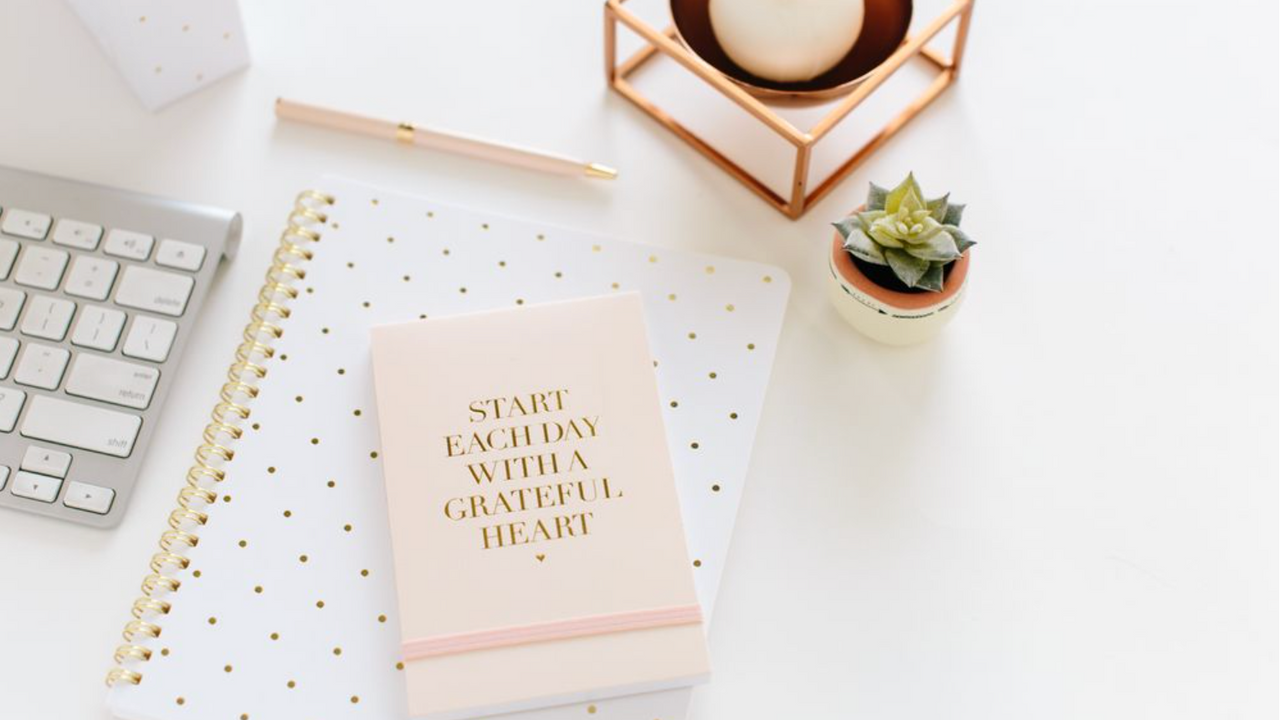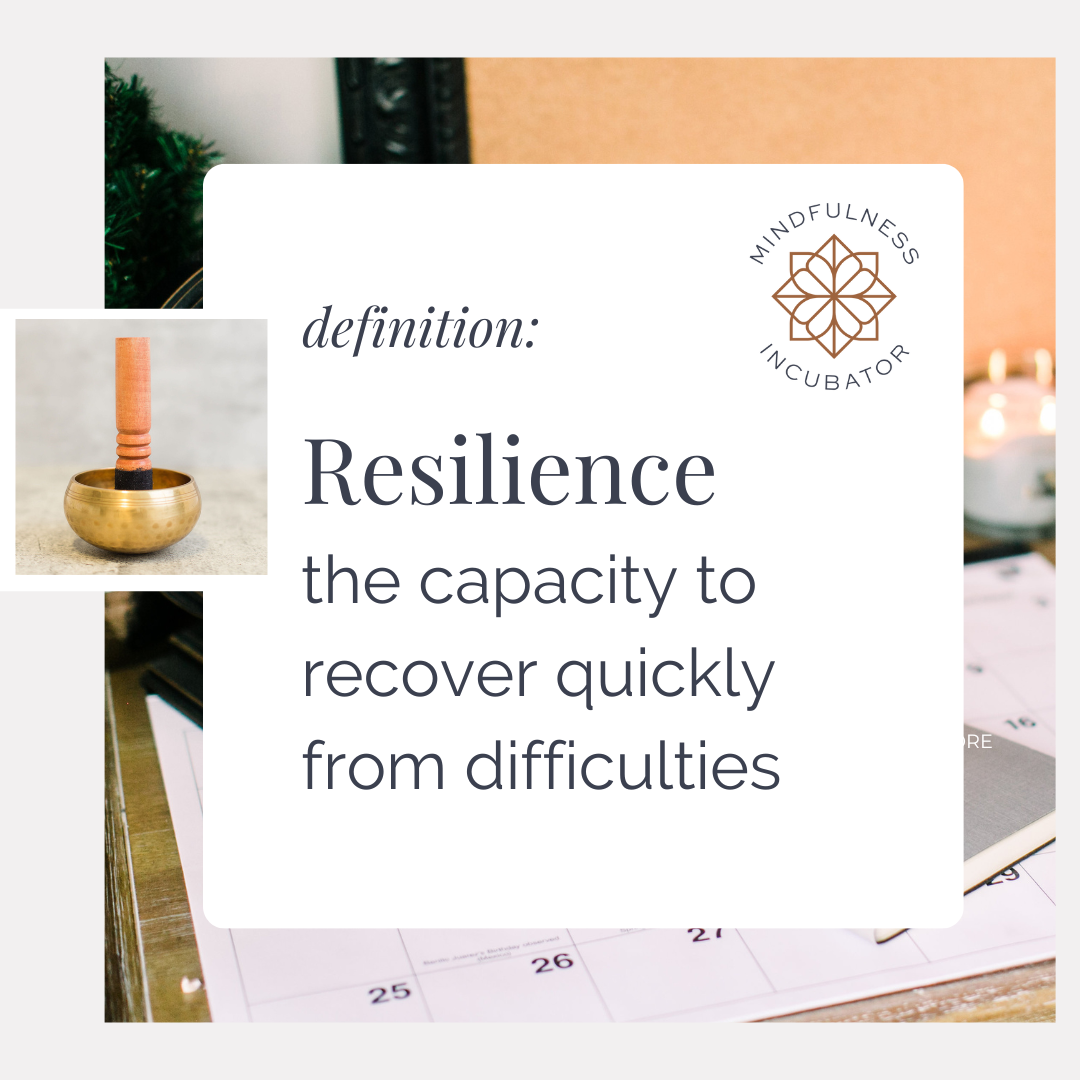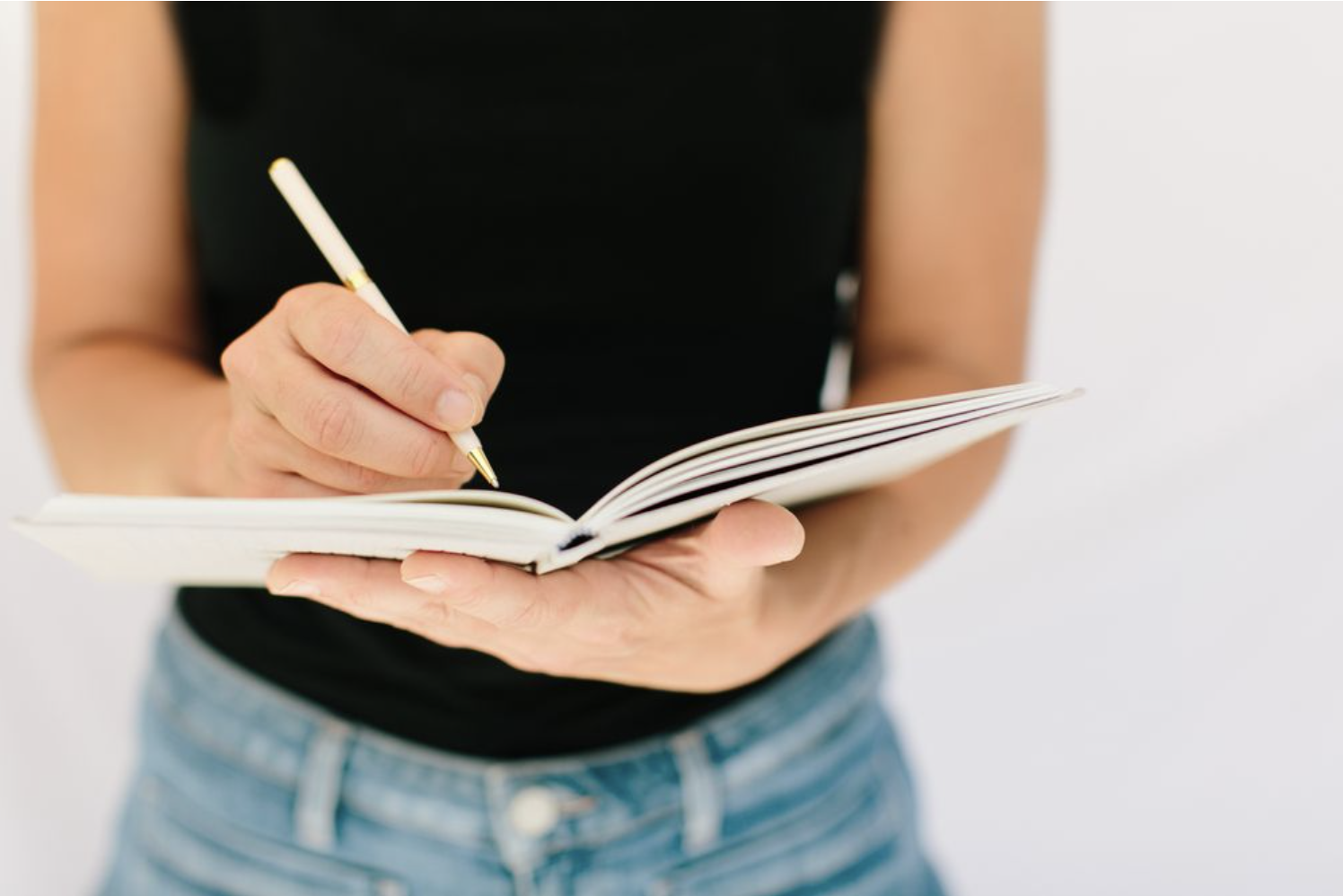Resilience 101 & Journaling as a coping and inspiration tool
Aug 13, 2022
Resilience is not about avoiding difficult circumstances, or being free from obstacles, loss, or trauma. It’s about how you recover from these hardships.
 Resilience is defined as the capacity to recover quickly from difficulties; toughness.
Resilience is defined as the capacity to recover quickly from difficulties; toughness.
Here’s the good news: skills that contribute to stronger resilience can be learned.
According to the American Psychological Association, factors generally recognized as being linked to greater resilience are:
- The presence of strong social connections - the quantity and quality of close relationships (friendships, family bonds, romantic relationships)
- The way in which you engage with the world - including cultivating mindfulness, physical and mental wellbeing, and avoiding pessimism and negative engagement
- Specific coping strategies - like the ability to make meaning, problem solve, keep things in perspective, create purpose and remain hopeful
Resilience is a muscle that can be trained. Over the coming weeks we’ll be exploring a range of specific tools and skills that help build greater resilience, starting with this blog post focused on Journaling.
A note: These posts are focused on building foundational skills over time. If you are in a crisis now, you might find this blog post supportive, outlining how mindfulness and self-compassion can help endure when everything sucks.
Journaling as a coping strategy
“Journaling is an effective way to channel intense feelings into healthy and productive internal fuel. It is a form of self-expression that when done properly can lead to personal growth. When writing down your thoughts and feelings, you are forced to pause and focus on the details you may have otherwise missed.” - National Alliance on Mental Illness
Journaling can serve as an escape, as a tool for contemplation, or as a way to release difficult experiences you might be dealing with. There's a growing body of evidence that supports the positive impacts of journaling. One of the first was a 1988 study where participants did “Expressive writing” on profound topics for four days. They experienced sustained positive effects: they were healthier after six weeks, and happier as much as three months later than a control group who wrote about superficial topics. Multiple studies since have confirmed and reinforced the benefits. This one is an example, reporting that “Expressive writing for 15 to 20 minutes a day three to five times over the course of a four-month period was enough to lower blood pressure and have better liver functionality. “.

“I don't know what I think until I write it down.” - Joan Didion
Easy steps for getting started with journaling
How can you quickly and easily get started with journaling to see how it works for you? Follow the four easy steps below.
1. Set your time
Our philosophy is that small interventions that are consistently made are better than bigger ones that taper off after a few days or weeks. So start with something that you feel really confident you can consistently do. That might be just a few minutes to espond to a prompt, or you might aim for the 15 minutes the research suggests has a significant physiological benefit. Then identify a specific time of day that you’ll aim to complete your journaling. Is it first thing in the morning? Right before bed? During your lunch hour? It’s best to identify a time where you’re less likely to be interrupted, or encroached on by other obligations. Plan it ahead, and then commit to doing it consistently for long enough for you to see how it impacts you and if you’re experiencing benefits from it.
2. Gather your supplies
It need not be fancy. Any notebook you have lying around or a few sheets of loose leaf paper will do, and any pencil or pen will work. We are advocates of writing by hand, rather than typing on a device. You can also take it as an opportunity to treat yourself to a beautiful notebook and a pen that you enjoy writing with. We love Archer & Olive's notebooks. Archer & Olive is a wonderful woman-owned business with a mission to champion mental health, and writing in them feels like a treat every day. After trial and error, these pens are our top pick.

3. Plan your approach
There are a few different approaches to journaling:
- Freewriting: You might first try freewriting, which is “the practice of writing down all your thoughts without stopping, and without regard for spelling, grammar, or any of the usual rules for writing.” Freewriting is embraced in the creative communities (writers, poets, artists of all kinds) as a fabulous way of managing the inner critic, sorting out the mental chaos and getting ideas to flow. Many credit Julia Cameron’s 1992 work “The Artist’s Way” for the rise in popularity of Freewriting.
- Prompts: A blank page can feel like a daunting starting point. If that's how it feels to you, consider using prompts to get you writing. We’ve put together a downloadable PDF with some of our favorite prompts, which you can grab here. They include:
- Prompts for inspiration
- Prompts for self reflection & discovery
- Prompts for gratitude & appreciation
- Prompts for processing difficult experiences
- Q&A: This technique is essentially interviewing yourself. Take a few minutes to ask yourself questions you’ve been thinking about, or that come to mind during the journaling. Write whatever thoughts, ideas, feelings that come to mind in response without filtering or editing them. Be open to what comes up. Examples of questions might be:
- What can I do to care for myself today?
- What really matters to me today?
- How can I best show up for [the challenging situation you’re anticipating]?
- What decision or action have I been putting off?
- Where can I find joy and fun today?
- Fill out a guided journal: If you’re looking for a little structure to get your started, try a guided journal that is pre-loaded with themed explorations and questions. Some examples:
- The “5-Minute Gratitude Journal” - which is just what it sounds like, a daily ritual focused on finding and expressing gratitude.
- The “Me-est Me Journal” - from a female founded business based out of SoCal, this journal is focused on helping you reconnect with yourself.
- “The Next Right Thing Journal” - focused on helping you clear the chaos to reach decisions.
- “Q&A a Day” - A five year journal with one question every day.
We suggest starting with whatever approach feels easiest or most interesting to you. If it doesn't work, you can always try something else. And remember, if you need inspiration, you can download our favorite journal prompts here.
4. Do it
This is the most important step. Just do it .Try it. Start it. Write whatever, get in the groove. Put words on a page.

Takeaways…
Adding journaling to your habits can contribute to improved wellbeing, help you cope with difficult situations, and build your resilience to hardship. It’s a muscle you build over time, and like any skill, it pays off most when you’re consistent. There’s no one right way to journal, have fun with it and see what seems to work well for you!
Journaling is one of the resilience tools we explore during our Digital Detox & Renewal Retreat, September 16-19th 2022 in Santa Fe, NM. If you’re looking for a profound and transformational reset, that you’ll walk away with practical tools for wellbeing and resilience, reach out! We have just a few spots left.

Want a nudge to be more mindful? Grab the Mindful in 5 Phone Wallpaper!
Never miss a post!
Get notified anytime we have something new.
We hate SPAM. We will never sell your information, for any reason.

